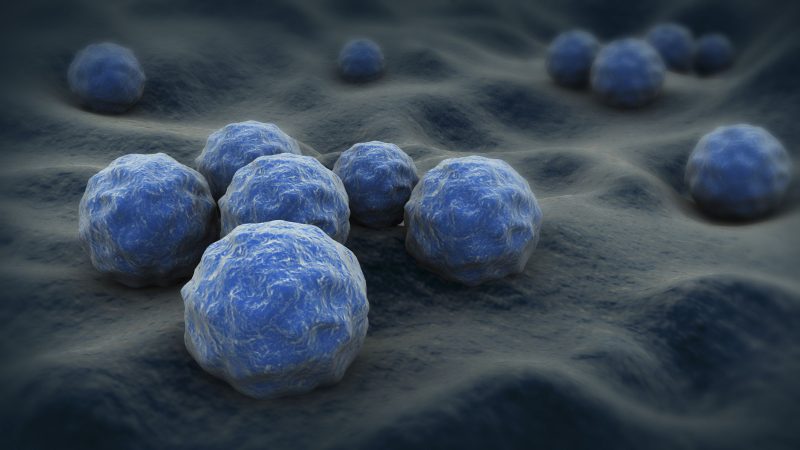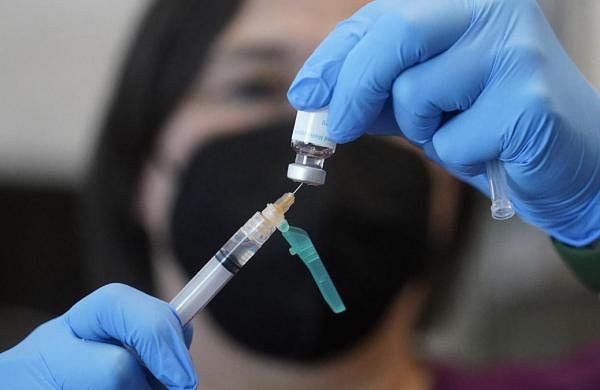A sexually transmitted disease (STD) is a disease that is primarily spread through sexual contact. The term STD might be used interchangeably with sexually transmitted infection (STI).
For those who make a distinction, such as Dr. Cornelius Reitmeijer, director of the Denver STD/HIV Prevention Training Center, there is one main difference between the terms. An STI is an infection usually acquired through sexual activity that may or may not display symptoms and become a sexually transmitted disease (STD).
This article will discuss the difference between STI and STD, as well as types, symptoms, tests, and treatment.
Stocktrek Images / Getty Images
The Difference
STDs begin as sexually transmitted infections (STIs). Infection occurs when a sexually transmitted bacteria, virus, or other microbe enters the body and begins multiplying. Once established, the infection may progress into a disease (an STD).
While this distinction can be made, in practice the terms are interchangeable according to most health authorities, such as the Centers for Disease Control and Prevention (CDC). The American Sexual Health Association notes there has been a shift toward using STI, but there is no consensus in the medical and public health community.
Dr. H. Hunter Handsfield wrote in a 2015 commentary in the journal Sexually Transmitted Diseases that STD became standard terminology in the 1970s, in part to get away from the stigmatized term “venereal disease” (VD).
A decade later, STI was introduced, in part because there were many such infections that didn’t appear to progress to disease. However, it is now recognized that some STIs that have few or no symptoms at the outset can lead to significant complications, such as infertility or cancer. Handsfield notes that this undercuts the rationale for using the term STI.
Another reason given for the distinction is that some think STI carries less stigma than STD, and therefore people might be more likely to seek screening for these infections. However, research into whether this is a significant effect is mixed.
Infection vs. Disease
STIs are infections caused by bacteria, viruses, or parasites. They’re usually transmitted during sexual activity through an exchange of bodily fluids or skin-to-skin contact where the infection is active.
Non-sexual activities in which bodily fluids are exchanged can also transmit STIs. For example, people who share needles can infect each other with the human immunodeficiency virus (HIV). Some STIs can also be transmitted by kissing someone on the mouth, although this is considered to be low risk for most STIs.
STDs are diseases that result from STIs. All STDs start out as infections. Pathogens, which are disease-causing organisms such as viruses and bacteria, enter the body and begin multiplying. When these pathogens disrupt normal body functions, they produce diseases.
It’s important to note that some STIs may never develop into diseases. For example, most human papillomavirus (HPV) cases go away on their own without causing health problems. However, HPV can produce genital warts or cervical cancer, which are diseases.
Types
Common types of STIs and STDs include:
Symptoms
Symptoms associated with STDs vary depending on the type of infection. The onset of symptoms can take days, weeks, or even years to appear, but not everyone develops symptoms. Once symptoms are noticeable, the STI has produced a disease.
If you are symptomatic for an STI, you may experience:
Abnormal discharge from the penis or vagina
Sores or warts in the genital or anal area
Itching or redness around the sores
Sores in and around the mouth
Painful or burning sensation when urinating
Abnormal vaginal odor
Pain during sex
Swollen lymph nodes in the groin
If an STI becomes an STD, symptoms can vary. Some may be similar to the above while others can be different and, sometimes, more serious. These include:
FeverFatigueMemory lossNauseaChanges to hearing and visionWeight loss
Some people may mistake symptoms of an STD for a urinary tract or yeast infection. If you’re uncertain about the cause of your symptoms, consult a healthcare provider.
How to Test
Your healthcare provider may use some or all of the following tests to determine the type of STI you have. These tests include:
Physical exam: Your healthcare provider will do a physical or pelvic examination, looking for signs of infection.
Blood tests: Your healthcare provider will collect a blood sample (either a blood draw or finger prick) to diagnose certain infections like syphilis or HIV.
Urine tests: Urine testing may be done for gonorrhea and chlamydia. During the test, you’ll provide a sample of urine in a sterile cup as instructed by your healthcare provider.
Fluid samples: Fluid samples can be taken from the vagina or penis to be examined under a microscope for organisms like the parasite that causes trichomoniasis.
Swab tests: During this test, your healthcare provider will use a special swab to take a sample from the site of the infection. Swab tests are used to diagnose HPV, chlamydia, gonorrhea, and herpes.
How Common Are STIs?
The Centers for Disease Control and Prevention (CDC) estimates that one in five people in the United States have an STI or STD, and almost half of those cases occur in people ages 15 to 24.
Treatment
Antibiotics (medicines used to fight bacterial infections) can treat and cure STIs and STDs caused by bacteria and parasites, but they can’t cure viral infections. These medicines may be administered as a single injection, or as an oral pill to be taken over several days.
STIs caused by viruses are usually treated with oral antiviral or antiretroviral medications. Most viral STIs can be managed but don’t have a known cure.
How Do I Prevent an STI?
Prevention is the best way to prevent an STI. Protective devices like condoms and dental dams can significantly reduce the risk of spreading an STI. There are also vaccines for certain infections, specifically HPV and the hepatitis B virus.
Summary
The terms STI and STD are often used interchangeably, including by most health authorities. Distinctions between the two terms are made by some who believe STI may carry less stigma.
A sexually transmitted infection (STI) is primarily spread through sexual contact. STIs may be caused by bacteria, viruses, or parasites. An STI may or may not produce symptoms and develop into a sexually transmitted disease (STD). STD symptoms vary depending on the type of infection.
There are several tests a healthcare provider can use to determine the type of STI you have. Antibiotics may be used to treat and cure bacterial STIs. Viral infections may be managed with antivirals or antiretrovirals but are not usually curable.
Do not try to self-diagnose or treat yourself for an STI or STD by using medication without a prescription. Always consult a healthcare provider if you suspect you may have an STI or STD and take all medications as directed.
A Word From Verywell
Although STIs are fairly common, abstaining from sex, wearing protective devices, and getting tested are effective ways to protect yourself and your partner from an STI infection and the symptoms that may arise if it progresses to an STD.
Frequently Asked Questions
How long does an STD test take?
Depending on the type of STD test you took, results can be returned in as little as 30 minutes (rapid HIV test). However, most results are returned within one to three days for blood, urine, or saliva tests.
How much does an STD test cost?
STD testing is often, but not always, covered by insurance. If your insurance does not cover it, testing is usually available at a low-cost or free STD clinic. You can also choose to do self-tests, which can cost between $50 and $300, depending on the number of STDs they screen for.
What is the most common STI/STD?
According to the Center for Disease Control and Prevention (CDC), human papillomavirus (HPV) is the most common STI/STD in the United States.
How can an STI or STD affect pregnancy?
An STI or STD can lead to serious pregnancy complications, including miscarriage, stillbirth, and birth defects. Some of these problems may be seen at birth; others may not be discovered until months or years later. Therefore, it is important to get regular STI or STD testing early in pregnancy until close to delivery.
Discovered on: 2022-06-05 05:24:38
Source: STD vs. STI: Differences, Symptoms, and Testing



